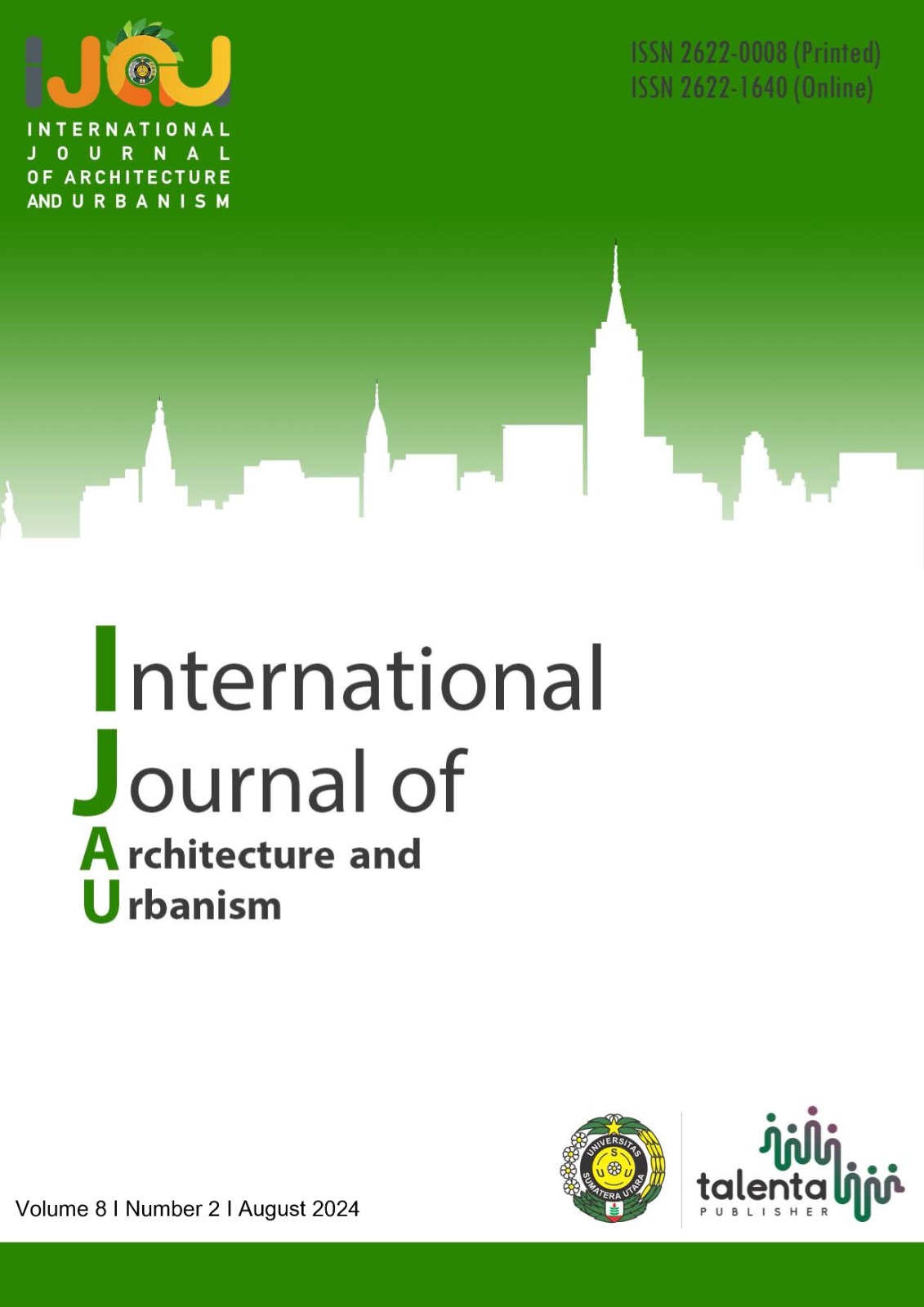The New Fisher Village in Belawa, Medan With Green Architecture
DOI:
https://doi.org/10.32734/ijau.v8i2.6655Keywords:
Green Architecture, Fisherman Village, BelawanAbstract
Abstract. The existence of coastal areas appears to be overlooked and undervalued. A place that should have good qualities and potential has turned into a slum, with a lot of rubbish, ill inhabitants, and a poor socioeconomic level. The Sebrang Belawan Fisherman's Village in Medan is one of the coastal instances. Every year, the average number of residents grows, causing the neighborhood to become increasingly slum due to its lack of organization. Through the utilization of natural energy and community empowerment in the principles of Green Architecture, the coastal area should be a location for public space that may revive the existence and distinctive culture of the fishing village community. As a result of some of these factors, project planning in this area is undergoing the process of developing Belawan's coastal area using a green architecture strategy as a solution to the difficulties that exist in this area. The significance of Green Architecture as a strategy for creating environmentally-friendly public spaces and other supporting structures in order to address issues such as slums, garbage, and a community's low economic status. As a result, this region will show a well-kept village, a vacation destination, and a place with significance in the local community and beyond.
Downloads
Downloads
Published
How to Cite
Issue
Section
License
Copyright (c) 1970 International Journal of Architecture and Urbanism

This work is licensed under a Creative Commons Attribution-ShareAlike 4.0 International License.


.png)










